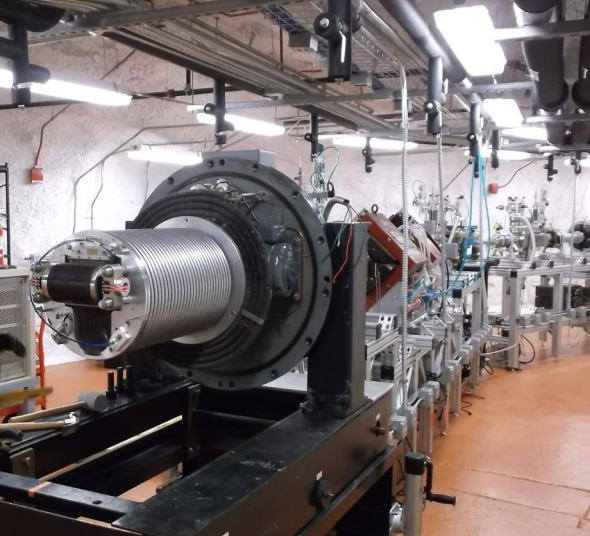Data
You will be redirected to cenamweb.org in 15 second(s). The JINA-CEE website is not updated anymore. The archived website can still be reached through the CeNAM website.
CASPAR Accelerator Assembled Underground

Stellar model simulations done by JINA-NuGRID collaboration and others have highlighted the need for improved understanding of low energy cross sections of stellar helium burning reactions. For this purpose the Compact Accelerator System for Performing Astrophysics Research (CASPAR) has been developed by JINA Notre Dame at the Sanford Underground Research Facility (SURF) located at the Homestake Mine in South Dakota.
Over two years in the making, this January the CASPAR facility has reached a long anticipated milestone with the installation of the 1 MV accelerator column. This final equipment placement completes the main stage of installation at SURF. The complexities of creating a nuclear astrophysics lab a mile underground have presented many unique challenges along the way. Equipment designed, built and tested at the University of Notre Dame was deconstructed into modular components, ready for underground installation at a repurposed gold mine 4850 feet below the city of Lead, South Dakota. With these sections now reassembled, a final push is underway towards full system commissioning prior to the projected start of beam tests in the spring. Accelerator operations will make CASPAR the deepest underground accelerator facility in the world and the first of it’s kind in the US. With the great strides being made by the CASPAR team, full operation of the system will soon lead to the measurement of neutron sources for the slow-neutron-capture-process. The s-process is a nucleosynthesis mechanism that occurs at relatively low neutron density and intermediate temperature conditions in helium and carbon burning stars. The results will lead to a better understanding of s-process sites and to a self-consistent modeling of s-process nucleosynthesis using NuGRID codes.
